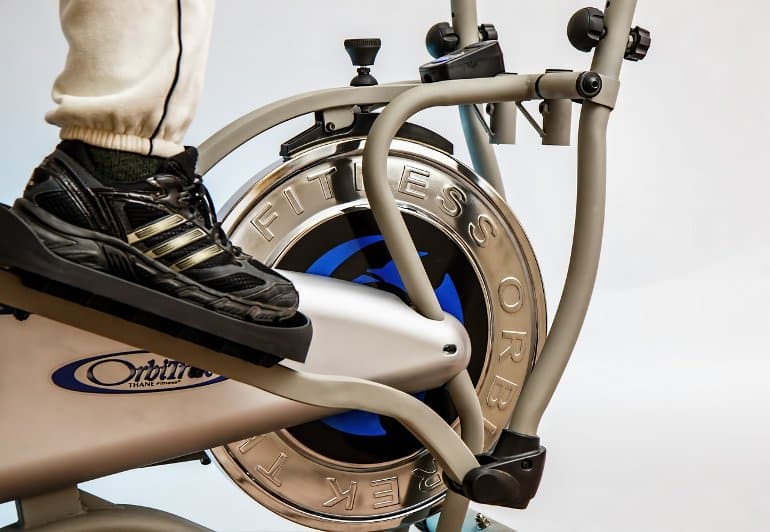Summary: Augmenting exposure therapy with ten minutes of aerobic exercise reduces PTSD symptom severity for up to six months after a nine-week course of treatment ends.
Source: University of New South Wales
Exposure therapy is one of the leading treatments for post-traumatic stress disorder (PTSD), but up to a half of all patients don’t respond to it.
But now a study led by UNSW Sydney psychologists has found that augmenting the therapy with 10 minutes of aerobic exercise has led to patients reporting greater reduction to PTSD symptom severity six months after the nine-week treatment ended.
In the first known single-blind randomized control trial of its kind, researchers in Sydney recruited 130 adults with clinically diagnosed PTSD and assigned them to two groups. People in both groups received nine 90-minute exposure therapy sessions. At the end of each session, one group was put through 10 minutes of aerobic exercises, while members of the control group were given 10 minutes of passive stretching.
People in the aerobic exercise group on average reported lower severity of PTSD symptoms—as measured on the CAPS-2 scale—than those who had their exposure therapy augmented by stretching exercises at the six-month follow-up. Interestingly, there were no clear differences between the two groups one week after the treatment program ended, suggesting the benefits take time to develop.
The findings were reported in The Lancet Psychiatry.
Extinction learning
Scientia Professor Richard Bryant oversaw the clinical research which ran between 2012 and 2018. He says the goal of exposure therapy in treating PTSD is extinction learning, where a patient learns to equate something that up until now they have associated with the trauma, with a feeling of safety.
For example, a person who has experienced sexual violence may associate some of the stimuli that were present at the time of the trauma—such as night-time, sexual activity, the smell of aftershave etc.—with threat. Exposure therapy would focus on these triggers and try to demonstrate they offer no threat, with the hope that after repeated, gradual exposure, extinction learning is embedded in the brain of the sufferer.
“Extinction learning is not unlearning the bad experience,” Prof. Bryant says. “It’s a new learning that inhibits the old learning.
“Past studies have shown that very brief bouts of aerobic exercise can be helpful because they actually promote extinction learning in rats, and have also been shown to promote it in humans under experimental conditions.”
But the theory hadn’t been tested in clinical conditions until now. Prof. Bryant and colleagues say they think brief, intense exercise promotes a particular growth molecule in the brain called Brain-Derived Neurotrophic Factor, or BDNF.

“Why that’s really important is it actually promotes synaptic plasticity in the brain, which is really important for learning. And we know that this underpins extinction learning. So if we can get this BDNF more active in the brain, at the time of exposure therapy, theoretically, that should lead to better extinction.”
More studies needed
To Prof. Bryant’s knowledge, this is the first time the benefits of aerobic exercise in conjunction with exposure therapy have been observed in a clinical setting. But despite being pleasantly surprised by the results, he says the study needs to be replicated a number of times before this therapy tweak is recommended, standard practice, or is used to treat other psychological conditions.
“‘I’d really like to emphasize that this is the first trial that’s shown this in an anxiety disorder and I don’t think we should get too excited by it,” he says.
“But as with all of these things, you always need multiple trials to actually have any faith in it. So I’m certainly not telling people to run out and start doing exercise after all your exposure therapy, because I think it’s premature after one trial. But having said that, this is very encouraging.”
Prof. Bryant says there is a large trial replicating the method happening in Melbourne at the moment which he and his peers will be watching with interest.
About this PTSD and exercise research news
Author: Lachlan Gilbert
Source: University of New South Wales
Contact: Lachlan Gilbert – University of New South Wales
Image: The image is in the public domain
Original Research: Closed access.
“Augmenting trauma-focused psychotherapy for post-traumatic stress disorder with brief aerobic exercise in Australia: a randomised clinical trial” by Richard A Bryant et al. Lancet Psychiatry
Abstract
Augmenting trauma-focused psychotherapy for post-traumatic stress disorder with brief aerobic exercise in Australia: a randomised clinical trial
Background
Although exposure therapy is central in most front-line psychotherapies of post-traumatic stress disorder (PTSD), many patients do not respond to this treatment. We aimed to investigate the effects of brief aerobic exercise on the efficacy of exposure therapy in reducing the severity of PTSD.
Methods
We did a single-blind, parallel, randomised controlled trial in Sydney, NSW, Australia. We included adults (aged ≥18 years) with clinician-diagnosed PTSD. We excluded participants aged 70 years or older, with imminent suicidal risk (reporting suicidal plan), presence of psychosis or substance dependence, history of moderate-to-severe traumatic brain injury, or presence of a physical disorder or impairment that might be exacerbated by aerobic exercise (eg, back pain). We randomly assigned participants (1:1) to nine 90-min weekly sessions of exposure therapy for PTSD with 10 min aerobic exercise or to the control group of exposure therapy with 10 min passive stretching. The primary outcome was PTSD severity measured by the clinician-administered PTSD scale 2 (CAPS-2), independently assessed at baseline, 1 week after treatment, and 6 months after treatment (primary outcome timepoint).
Findings
Between Dec 12, 2012, and July 25, 2018, we enrolled 130 participants with PTSD, with 65 (50%) participants randomly assigned to exposure therapy with exercise and 65 (50%) to exposure therapy with passive stretching, including 79 (61%) women and 51 (39%) men, with a mean age of 39·1 years (SD 14·4; range 18–69). 99 (76%) participants were White, 14 (11%) were Asian, and 17 (13%) were listed as other. At the 6-month follow-up assessment, participants in the exposure therapy with exercise group showed greater reductions in CAPS-2 scores relative to those in the exposure therapy with stretching group (mean difference 12·1 [95% CI 2·4–21·8]; p=0·023), which resulted in a moderate effect size of 0·6 (0·1–1·1). No adverse events associated with the intervention were reported. The trial was prospectively registered on the Australian and New Zealand Clinical Trials Registry, ACTRN12612000185864.
Interpretation
Brief aerobic exercise has the potential to augment long-term gains of exposure therapy for PTSD, which accords with evidence from studies in animals and humans on the role of exercise in modulating the extinction learning processes. This strategy might offer a simple and affordable means to augment treatment gains for exposure therapy in people with PTSD.
Funding
Australian National Health and Medical Research Council.






